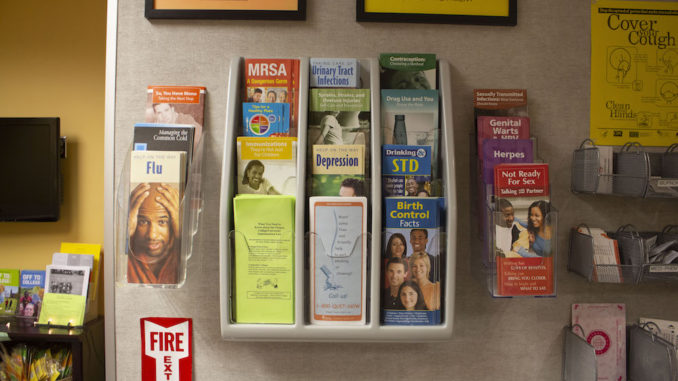
By Mackenzie Bath
College is a hotbed for hookups. Considering the state of sex education in this country, it is no wonder that young people aged 15 to 24 acquire half of all new sexually transmitted diseases (STDs), according to the Center for Disease Control’s 2017 STD Surveillance Report. This age range also includes high school students, but the problem is especially intense on college campuses. Young people disproportionately receive STDs, and this in part has to do with the idea that no one thinks it will happen to them. There is a huge lack of information available to students about the very real dangers of STDs.
The CDC also found that one in four sexually active adolescent females have an STD, such as chlamydia or human papillomavirus (HPV). It is much more common than people want to believe. People want to trust that their partners are clean, but without proper testing, there is no way to know for sure. HPV, for instance, often does not show symptoms in males. There are many STDs that can be contracted and spread without the knowledge of the person who has it. That is why it is so important to get tested at least every six months if you are sexually active.
The conversations around testing are limited. This comes from a desire to have sex be, well, sexy. No one feels attractive when they say “show me your most recent clean bill of health,” but it is an important part of sex. As previously mentioned, sex education is severely lacking in this country. Most people that I know never learned about STDs in school, and those who did often did not learn about them in a realistic way. There are many STDs: some treatable, some deadly, some painful, some invisible. The biggest misconception about STDs is that you have to have unprotected sex to get them. Many of these diseases and infections can be transmitted when a condom is used, or during other forms of contact. Herpes, for instance, can be transferred by any exposure to a sore — no matter where on the body that contact takes place.
So, it is unsurprising that people would skip the unsexy conversation about testing. This leads to even more people being exposed to STDs on college campuses. If one in every four sexually active young adult women has an STD, then your chances of getting one are pretty high depending on your sex life. Colleges could be doing more to inform their students about sexual health and STD prevention.
I know a lot of people who do not want to get tested because it seems like a waste of time. There are people who think they will know if they get an STD, so they choose not to get regular checkups. At the Lewis & Clark Health Service, you can get a quick blood and swatch test for all the basic STDs during a 15 minute appointment. Within a week or so, they will call you with your results. If it turns out you have an STD which can be treated, they can prescribe medication for you. They can also provide you with reading material and resources with more information. With LC health insurance, all of this is free. In my opinion, there is no excuse for not getting tested continually if you are sexually active.
Subscribe to the Mossy Log Newsletter
Stay up to date with the goings-on at Lewis & Clark! Get the top stories or your favorite section delivered to your inbox whenever we release a new issue.

Leave a Reply